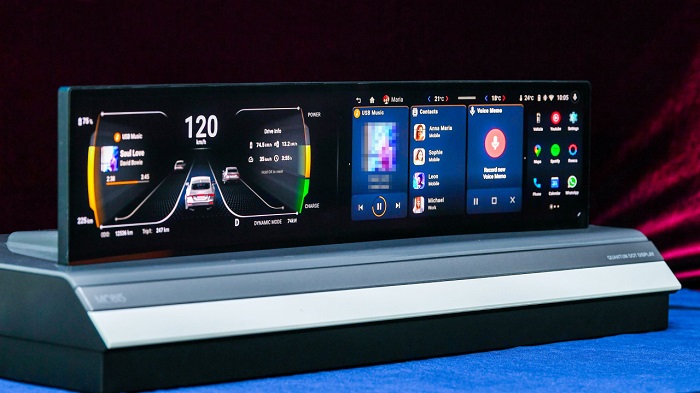Auto
Hyundai Mobis Introduces Biometric-Enhanced M.VICS 5.0 Digital Cockpit

- Hyundai Mobis unveiled M.VICS 5.0, a next-gen digital cockpit system with biometric analysis and adaptive display technologies for an integrated driving experience.
- VICS 5.0 features a panoramic multi-display, advanced safety features, and nine new patents, enhancing technological competitiveness in the autonomous and electric vehicle market.
Hyundai Mobis has consolidated its display innovation technologies to set a new standard for futuristic digital cockpits.
The digital cockpit, an infotainment system installed at the front of the driver and passenger seats, provides various driving information and media content while enabling external communication. As autonomous driving and electrification technologies rapidly advance, the competition in this field has intensified globally.
On June 11th, Hyundai Mobis unveiled M.VICS 5.0, the latest version of its next-generation integrated driver’s system, which encompasses these digital cockpit technologies. Since introducing M.VICS in 2021, featuring functions analyzing biometric signals such as posture, heart rate, and brain waves, Hyundai Mobis has continuously evolved the concept with annual upgrades.
The newly introduced M.VICS 5.0, under the development motto “All You Can See,” focuses on converging diverse display technologies. From a design perspective, it seamlessly integrates the entire front panel from the left pillar of the driver’s seat to the right pillar of the passenger seat into a single, borderless, wide-screen cockpit. This includes a technology that adjusts the size and angle of the display panel according to driving modes.
Panoramic Multi-Display Adapted to Driving Situations
The M.VICS 5.0 consists of five display panels: a 27-inch main screen for dashboard, navigation information, and media content, a 12.3-inch high-definition screen for the passenger, a 7-inch screen displaying various vehicle status information, and button controls. These are smoothly connected to create a spacious and open driver’s environment. A projection display with touch and haptic feedback has also been added below the large screen for enhanced convenience.
Hyundai Mobis has designed each display panel to function independently according to its purpose and use environment while allowing integration into a single screen when needed, achieving a ‘separate yet together’ implementation. The expansive screen displays diverse content, such as the dashboard, navigation, and infotainment, exceeding passengers’ expectations from vehicle displays.
Notably, the display panels feature a variable system that moves vertically and adjusts tilt, optimizing the screen’s size and position according to driving conditions. In the standard ‘Drive Mode,’ part of the panel lowers below the dashboard, transforming into a smaller display. In ‘Theater Mode’ for watching media content or ‘Relax Mode’ for resting, the steering wheel lowers and the seat tilts, with the display’s tilt and size automatically adjusting accordingly.
Comprehensive Driver’s Solutions Including Motion Sickness Care and Safety Features
The large-screen display covering the vehicle’s front includes lighting technology on both sides to prevent accidents by warning of potential rear-side collisions during boarding or alighting. Additionally, color scenarios help reduce motion sickness. Cameras mounted on the steering wheel and above the driver’s seat monitor real-time drowsiness and inattentive driving and issue emergency warnings. Various safety technologies, such as steering wheel slim airbags, passenger roof airbags, and knee airbags, are integrated to ensure passenger safety.
During the development of M.VICS 5.0, Hyundai Mobis filed nine new patents related to parts, mechanical package design, and UX (User Experience) technology. Hyundai Mobis registered over 1,700 patents in 2023 alone, strengthening its technological competitiveness to lead the future mobility market.



















































